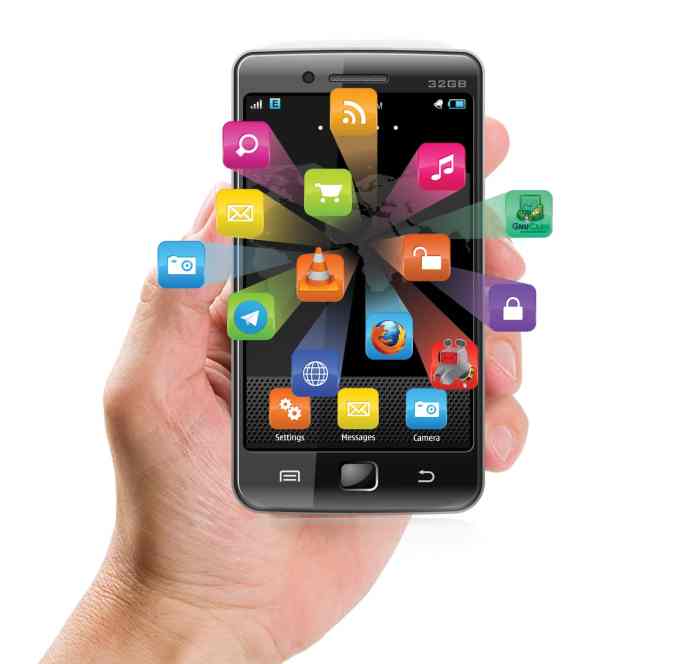How to create smartphone apps? It’s a question that many aspiring developers and entrepreneurs ask. The world of mobile app development is a dynamic and exciting landscape, offering opportunities to reach millions of users with innovative solutions. This guide delves into the essential steps, from understanding app types and planning your app’s purpose to choosing the right tools, designing a user-friendly interface, and navigating the app store submission process.
Whether you’re a seasoned developer or just starting your journey, this comprehensive guide will equip you with the knowledge and resources to turn your app idea into reality. We’ll explore the intricacies of native, hybrid, and web apps, providing insights into their strengths and limitations. We’ll also discuss popular app development frameworks like React Native, Flutter, Swift, and Kotlin, guiding you through the selection process and providing resources for learning the chosen technology.
App Marketing and Promotion
Getting your app in front of the right users is crucial for its success. Effective app marketing involves reaching your target audience, generating excitement, and driving downloads. It’s not just about creating a great app; it’s about letting people know it exists and why they should use it.
App Marketing Channels
There are various ways to market your app, each with its own strengths and weaknesses.
- App Stores: The primary platform for app discovery, app stores like Google Play and the Apple App Store offer features like app descriptions, screenshots, and user reviews. Optimize your app listing with relevant s, engaging descriptions, and high-quality visuals to attract users.
- Social Media: Platforms like Facebook, Twitter, Instagram, and TikTok allow you to connect with potential users, share updates, and run targeted advertising campaigns. Leverage these platforms to build a community around your app, showcase its features, and offer incentives for downloads.
- Blogs and Content Marketing: Create informative blog posts, articles, and videos about your app, its features, and its benefits. Share these on your website and other relevant platforms to attract users interested in your app’s category.
- Email Marketing: Build an email list of interested users and send out newsletters, updates, and promotional offers related to your app. Personalize your emails and offer valuable content to encourage engagement.
- Influencer Marketing: Partner with relevant influencers in your app’s niche to promote your app to their followers. This can be a highly effective strategy, as influencers often have a loyal and engaged audience.
- Paid Advertising: Utilize platforms like Google Ads, Facebook Ads, and App Store Ads to run targeted advertising campaigns that reach your ideal audience. This can be an effective way to drive app downloads, but it requires careful planning and budget allocation.
Building an App Audience
Building a strong app audience takes time and effort. Here are some strategies:
- Focus on User Acquisition: Invest in user acquisition strategies like paid advertising, social media marketing, and content marketing to reach potential users.
- Offer Value: Create an app that provides real value to users and solves a problem or meets a need. This will encourage word-of-mouth marketing and user retention.
- Build a Community: Engage with users on social media, respond to reviews, and create opportunities for user feedback. Building a community around your app fosters loyalty and advocacy.
- Provide Excellent Customer Support: Offer responsive and helpful customer support to address user issues and concerns. This demonstrates your commitment to user satisfaction and builds trust.
Generating App Downloads
Here are some strategies for driving app downloads:
- Offer Incentives: Provide free trials, discounts, or in-app rewards to encourage users to download and try your app.
- Run Contests and Giveaways: Host contests and giveaways on social media or through your app to generate excitement and attract new users.
- Partner with Other Apps: Collaborate with complementary apps to cross-promote each other’s products and reach a wider audience.
- Optimize Your App Store Listing: Use relevant s, engaging descriptions, and high-quality screenshots to make your app stand out in the app store.
- Encourage User Reviews: Ask satisfied users to leave positive reviews on the app store. Positive reviews can influence potential users and boost your app’s visibility.
Successful App Marketing Campaigns, How to create smartphone apps
Several app marketing campaigns have achieved remarkable success. Here are a few examples:
- Duolingo: Duolingo’s success can be attributed to its engaging gamification features, its focus on building a strong community, and its effective use of social media marketing.
- Headspace: Headspace effectively used influencer marketing and content marketing to reach a wider audience and establish itself as a leading meditation app.
- Tinder: Tinder’s success lies in its simple and effective design, its focus on social connections, and its use of paid advertising and influencer marketing.
Final Conclusion: How To Create Smartphone Apps
Creating a successful smartphone app is a journey that requires dedication, creativity, and a solid understanding of the app development landscape. By following the steps Artikeld in this guide, you can gain the necessary knowledge and skills to bring your app idea to life. Remember, the key to success lies in planning, designing, developing, testing, and promoting your app effectively. Embrace the challenge, learn from your experiences, and enjoy the rewarding process of creating a valuable app that resonates with your target audience.
Creating smartphone apps can be a rewarding experience, but it’s essential to consider your target audience and the devices they use. Understanding the average smartphone price can help you gauge the purchasing power of your potential users and tailor your app accordingly.
This knowledge can inform your development decisions, from features to pricing, ensuring your app reaches its intended audience.
 Informatif Berita Informatif Terbaru
Informatif Berita Informatif Terbaru
